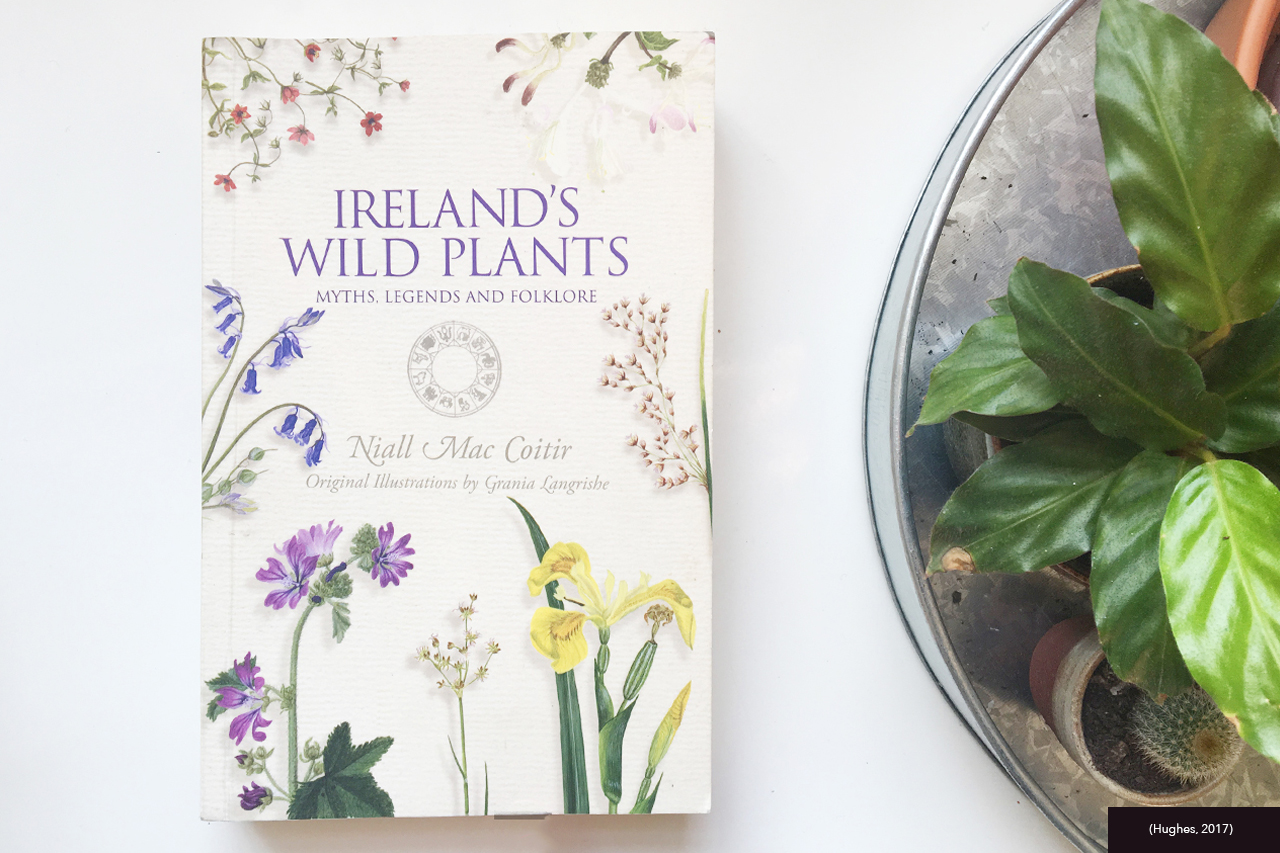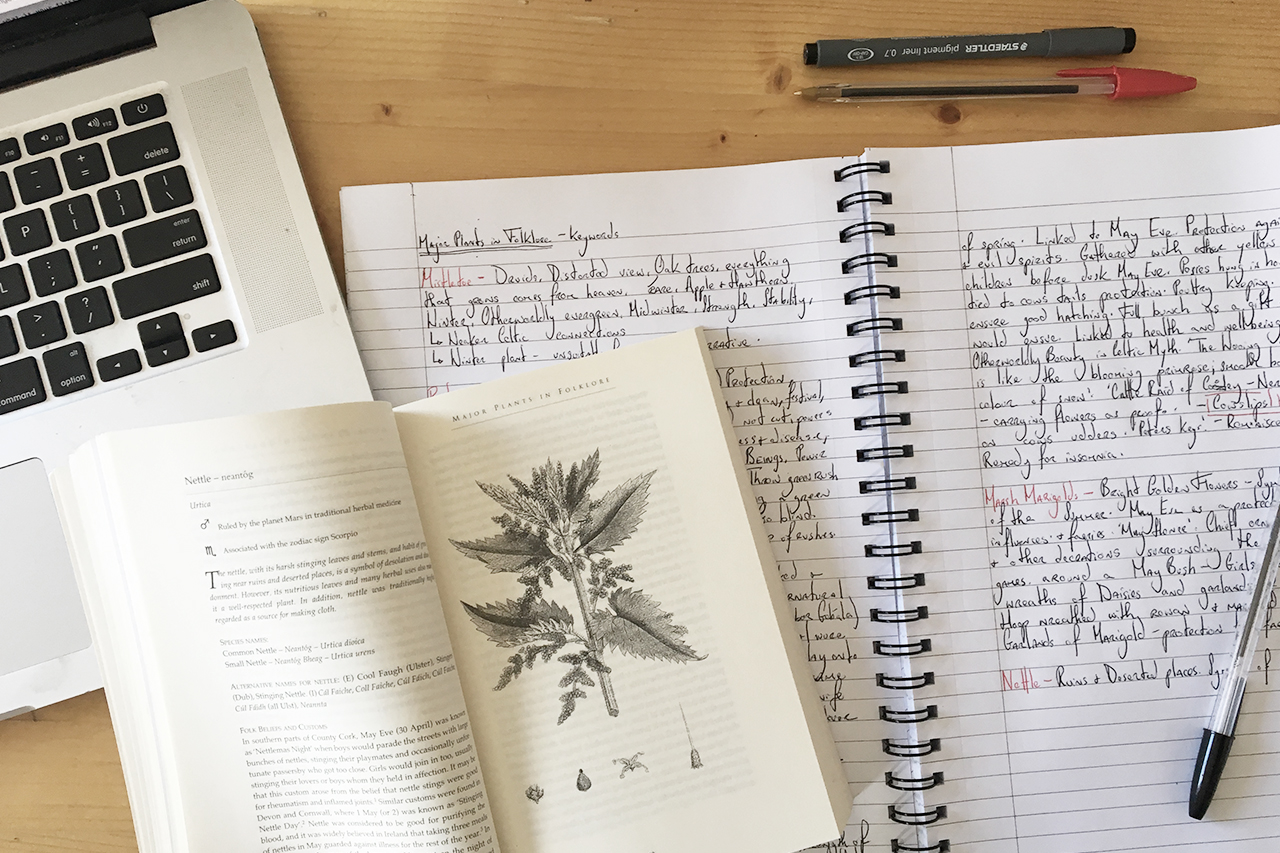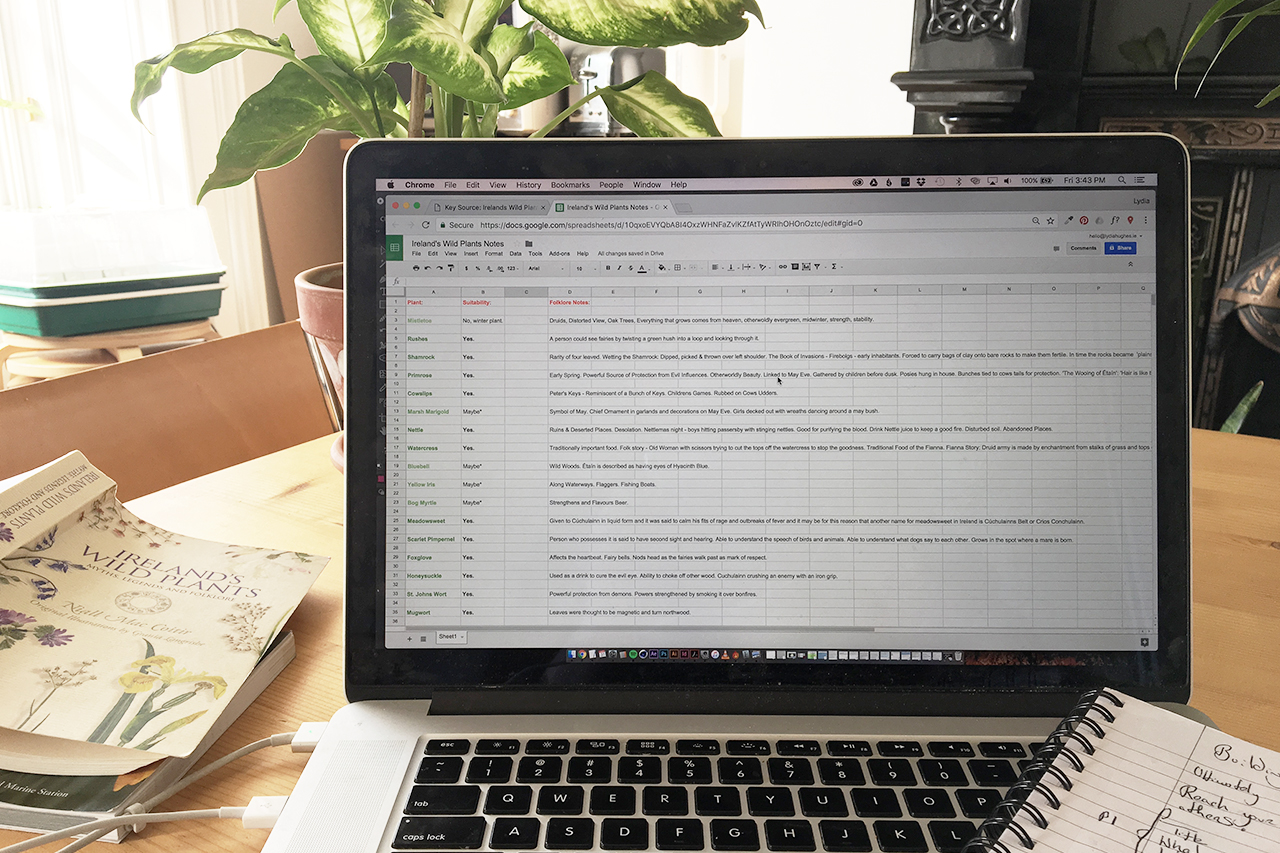
Irelands Wild Plants: Myths, Legends and Folklore
The folklore of our native plants has many different facets too. It varies from countless folk cures and remedies to the rich variety of local plant names, lucky plants like four-leaved shamrock and fern seeds, to love charms, and even childrens games. The pages that follow should leave no doubt that until modern times, peoples lives were influenced and dependent on the wild plants around them, in a way we can barely imagine today. (Mac Coitir, 2015)
My MA Practice Proposal lays out my intention to illustrate and animate a short film exploring the folklore and mythology surrounding Irelands native flora. Coming from a horticultural family I have always felt a close connection with plants and am a strong believer in their potential to enrich daily life. By making this film I hope to inspire others to consider and connect with the indigenous landscape and in doing so encourage conservational behaviour.
My practice tutor Anna had wisely advised me to begin storyboarding my film using thumbnail sketches and start to plan how the overall narrative of my film might work. Once I had conceived this initial framework I would then be able to focus on developing a visual style to fit within the concept.
Any folklore stories I knew prior to writing my proposal were learned anecdotally so I was keen to gain a solid grounding on the subject. I was familiar with Niall Mac Coitir’s work having heard him interviewed on radio a couple of times in the past. He is an active member of the Irish Wildlife Trust and has written a series of four books to date exploring the folklore around Irish trees, animals, birds and plants.

‘Ireland’s Wild Plants’ seemed like an excellent starting point for my research. The book examines a broad selection of native flora and details the folk beliefs, myths, legends and practical uses associated with them. As the author is trying to condense quite a lot of information into the book the content seemed a little general at times, however he draws on a broad range of references which I intend on exploring in detail as part of my ongoing research.
For a small island, Ireland contains a wealth of different landscapes, from forest to meadow; moorland and bog to hedgerows seashore to lakeside fen. Many different habitats are found close together in small pockets. (Mac Coitir, 2015)
I took notes as I read through the book and identified what I thought were the most compelling stories relating to each plant. I then created a Google Doc where I refined this list further.
I disregarded some others whose stories I felt were weaker or had more of a tenuous connection to Irish culture. I intend for my narrative to take place in early Summertime as this is the prime time of year to see wildflowers in Ireland so I also excluded plants more commonly associated with winter such as mistletoe and ivy.

As a result of this process I now have 26 strong visual cues for to begin initial thumbnail exploration while I continue on with my research process. These can be viewed here.
This source has provided me with an excellent grounding on the general subject of my MA Proposal. It has provided me with a series of starting points to follow up on and has given me the loose framework I required in order to make a start on my visual exploration.
Reference list:
Mac Coitir, N. (2015) Irish Wild Plants: Myths, Legends and Folklore. Cork: The Collins Press, Cork.
Hughes, L. 2017. Irish Wild Plants – Cover. [photograph].
Hughes, L. 2017. Irish Wild Plants – Note Taking. [photograph].
Hughes, L. 2017. Irish Wild Plants – Compilation. [photograph].
Bibliography
Hickey, D. (2006) Planting seeds of food and folklore. The Irish Examiner. 9th October.
Mac Coitir, N. (2015) Irish Wild Plants: Myths, Legends and Folklore. Cork: The Collins Press, Cork.
Viney, M. (2006) Flowery folklore hints at herbal history. The Irish Times. 16th September.



